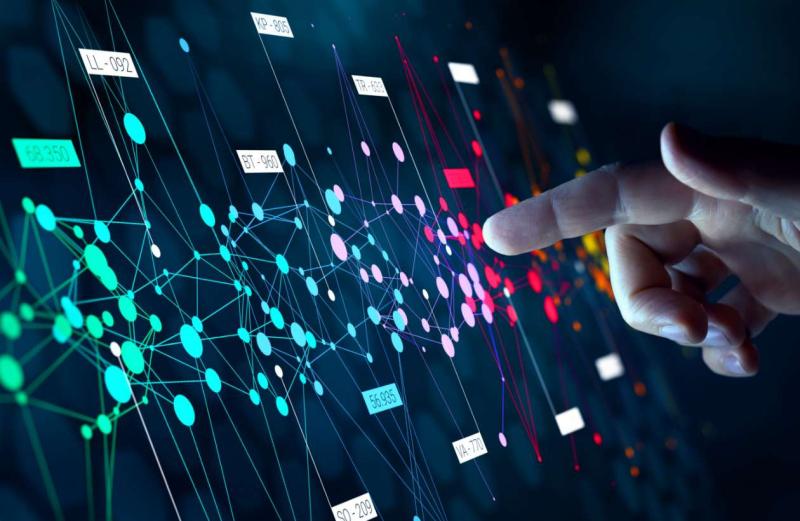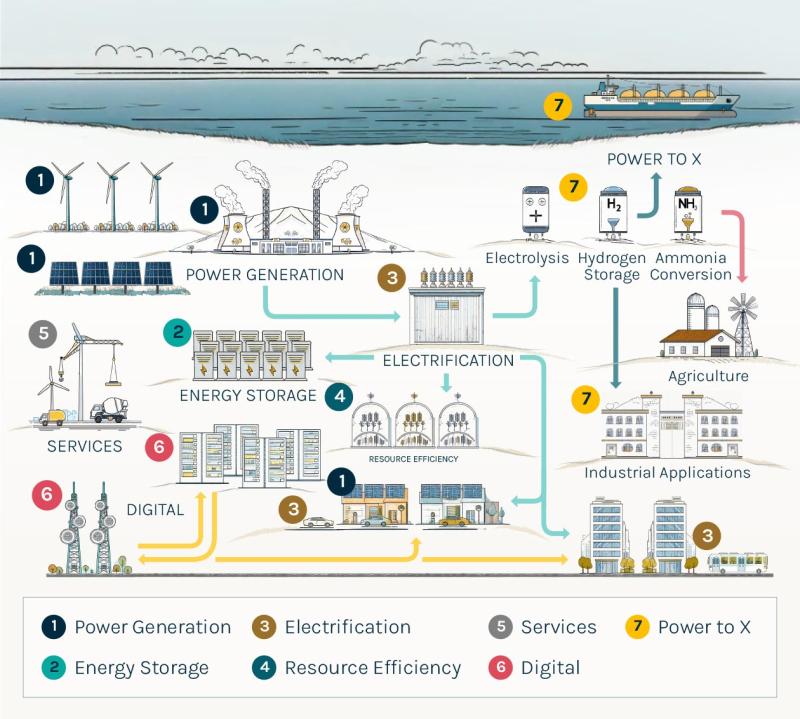The evolution of data centers, power, real estate and infrastructure—the makeup of the New Economy
Headlines everywhere highlight the growing demand for power generation, largely driven by artificial intelligence (AI), robotics, and automation. A topic less spoken about is the undersupply of real estate and infrastructure needed to support it—and how this provides a real market opportunity for investors.
A common question we get from advisors is, “How can I best illustrate the massive supply-and-demand imbalance to my clients, and the real asset investment opportunity it presents?”
Our answer? Show them just how connected everything is. Let’s dig in.
The way we live has changed
At work, our files live on the cloud while we video chat around the world. At home, we order goods at the click of a button using AI shopping tools like chatbots and algorithms. Our orders are fulfilled by robots in automated warehouses and delivered by increasingly smart, electrified connected fleets of vehicles linked by 5G networks. Our refrigerators have screens that tell us when it’s time to reorder our household staples. Our doorbells, light bulbs, garage doors and vehicles all connect to our phones and generate vast quantities of data (the “Internet of Things”). We scroll videos on social media and stream music and shows, while our kids use gaming consoles and virtual reality. Around us, the electricity grid, gas utilities, water pipes and roads are monitored remotely by technicians, creating environments known as “smart cities.”
In addition, we have the entry of artificial intelligence (“AI”). One AI search takes roughly 10x the processing power of a typical Google search. Generating an image through AI consumes roughly 50x the processing power while generating videos through AI can take 10,000x or more.
As a result, over the next five years, global data usage is expected to increase by ~3x compared to today. It is anticipated that hundreds of billions of dollars in data center real estate developments will be required in that timeframe. These complicated projects generally require an order of magnitude higher costs than traditional industrial real estate with longer lead times and specialist teams required. We see a gaping supply-demand imbalance in favor of the New Economy real estate investors.
The digital paradigm1
At Ares, we refer to the interconnectedness driven by new technologies—all requiring material increases in cloud adoption and data processing—as the New Economy.
How will we handle the soaring need for data storage and processing?
Answer: Intensive building.
The head of OpenAI, a leading AI service company and the creator of the ChatGPT chatbot, recently outlined plans detailing five or more five-gigawatt data centers around the country.
What does a five-gigawatt data center look like? Nobody knows yet—because a data center of that scale has never been built. The largest data center currently operating in the United States is only about one-tenth of this size.2 To get an idea of what this will look like, we asked ChatGPT to generate an image depicting what this estimated 30 million square foot facility (a bit larger than a square mile) might look like. Without any additional prompting, ChatGPT aptly knew that such a facility cannot be built relying on the current electrical grid and would need to include plenty of its own generation and transmission facilities.
Understanding gigawatts
Like power plants, data centers are measured in size by gigawatts. But whereas a power plant is measured by the amount of electricity it creates, a data center is measured by the amount of electricity it consumes.
How much is a gigawatt? To produce just one gigawatt of electricity, you need ~1.9 million solar panels, 294 wind turbines, four gas-fired power plants or one nuclear plant.3 On the consumption side, one gigawatt can power ~876,000 U.S. households—approximately the number of households in Houston, Texas.4
Generating 1 GW requires:
The explosion of data centers and the need to power them
After stagnating for two decades, the demand for power is suddenly taking off. In just five years, U.S. data centers alone are expected to consume more electricity than all but five entire countries.5
Where will all that power come from? Everywhere.
With 500 gigawatts of new U.S. generating capacity required, it will take an estimated $2 trillion of investments to meet 2030 power demand.6
Largest countries by power demand6
| Rank | Country | TWh Consumed (2022) |
|---|---|---|
| 1 | China | 8,540 |
| 2 | United States | 4,128 |
| 3 | India | 1,463 |
| 4 | Russia | 1,026 |
| 5 | Japan | 939 |
| U.S. Data Centers in 2030 | 635 | |
| 6 | South Korea | 587 |
| 7 | Brazil | 583 |
| 8 | Canada | 553 |
| 9 | Germany | 507 |
| 10 | France | 426 |
| 11-26 | Countries 11-26 | 252 (avg.) |
| U.S. Data Centers in 2022 | 159 |
Wind, solar and other renewables are leading contenders to bridge this gap. Many companies have explicit renewables targets, sharing their explicit preference for renewables.
Furthermore, the price of renewables is competitive. New generation capacity in onshore wind and solar is among the lowest-priced power alongside natural gas.
It’s not a fad: Companies investing billions to meet their ambitious renewable energy targets7
* PPAs = Power Purchase Agreement. Defined as a long-term contract between a supplier and consumer of power.
To supply a one-gigawatt data center, generators need two to four gigawatts of solar or wind power plus additional battery storage to consistently supply power over the course of a year.
Within the current framework, it will not be possible to supply 500 gigawatts of additional consistent electricity in a five-year time frame using renewables alone. In our view, we need an “all of the above” approach that, in addition to renewables, includes natural gas, nuclear and grid efficiency gains.
Again, we are met with a yawning supply–demand gap, in favor of the suppliers of capital (i.e., infrastructure investors).
Cost of energy over time9
Grid-enhancing technologies
Of the 500 gigawatts needed to meet U.S. electricity demand, up to 60 could come from technologies that enhance the efficiency of the grid, including:
- Advanced conductors (“reconductoring”)
- Utility line monitoring devices that adjust max transmission (“dynamic line rating”)
- Building renewables alongside existing fossil fuel plants to tap into their grid connections (“clean repowering”)
- Smart systems that work together, including distributed energy resources that take and receive power from the grid, such as electric vehicle batteries, rooftop solar and smart thermostats (“virtual power plants”).
It all connects: The great rewiring of modern society and the New Economy ecosystem
So, we have rewired the way we live in modern society and created the New Economy in the process. Here are the facts:
- We lean heavily on data.
- That data is transported through fiber optics, 5G and cell towers.
- The data is then processed through data centers, which are massive real estate undertakings.
- Data centers and our electrified fleets are fed through power lines, batteries and smart utility grids.
- Those lines, batteries and grids are powered through an all-of-the-above approach to electricity generation, which requires an estimated $2 trillion of investment over five years and is expected to largely come from private infrastructure investors.
- Ports, rails, roads and airports will need to deliver the materials to build new plants and the raw inputs to fuel existing plants through distribution warehouses.
Note: For illustrative purposes only. Information based on Ares’ views and experience.
How it all connects: The new infrastructure ecosystem
Everything connects—data centers, power, real estate, infrastructure, and all the services that make up our New Economy.
The trillions of dollars in demand coming from consumers and companies must be met by a limited supply of private capital from individual investors and institutions. We recognize that this is likely the largest supply–demand imbalance in many generations and at a scale of expansion never seen before.
Wherever such a gaping supply–demand imbalance exists, an investment opportunity lives. In this case, we believe it is through the New Economy real estate and infrastructure asset classes.







